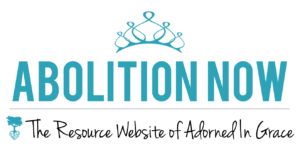
As a kid, I (not so) fondly remember going to sleepovers at a friend’s house and someone suggesting we watch a scary movie. These nights usually ended up with me lying on the floor, paralyzed in fear and unable to sleep. I hated it, those moments when your imagination runs wild, which typically resulted in my mind replaying the horrific scenes I had witnessed and extrapolating them to something much worse. Yet for some reason, at the next sleepover, the same thing happened. Then at the next, and, again, the next.
How humans can overcome even the most daunting of realities.
As a kid, I (not so) fondly remember going to sleepovers at a friend’s house and someone suggesting we watch a scary movie. These nights usually ended up with me lying on the floor, paralyzed in fear and unable to sleep. I hated it, those moments when your imagination runs wild, which typically resulted in my mind replaying the horrific scenes I had witnessed and extrapolating them to something much worse. Yet for some reason, at the next sleepover, the same thing happened. Then at the next, and, again, the next.
Ultimately, no matter how grotesque the scenes, no matter how morbid the killings, scary movies are tolerated because they have one thing in common: they’re not real. My imagination may run wild with the haunting images, but at the end of the day I can calm myself because I know that it’s only my imagination- not reality.
I often wonder what it is about human trafficking that stops people from acknowledging it, and when they do acknowledge its existence, how is it that they can stand by and do nothing? I think the answer may relate to the very reason why I could conquer even the most terrifying of films. I tell myself it must not be real. I convince myself it just can’t be true. And I think people are doing the same with human trafficking.
There’s nothing pretty about this situation. And currently, there are very few happy endings. People are being rescued, some victims are able to escape, and in a few places, perpetrators are prosecuted and convicted. Those victories are and should be celebrated. But when it comes to measuring the significance of human life, we must know that this is not enough. There are still thousands upon thousands who are being trafficked in the United States alone, and those are just the few cases we actually know about.
Human Trafficking Quick Facts
• 100,000 – 300,000 children are prostituted in the U.S.
• 244,000 children are estimated to be at risk for child sexual exploitation, including commercial sexual exploitation.
• 40-50 percent of street youth who engage in prostitution do so to meet their basic needs. The population of street youth engaged in prostitution is nearly equally divided between boys and girls.
• 12-14 is the average age of entry into prostitution for girls.
• 11-13 is the average age of entry into prostitution for boys.
Those are the facts, and yes, they are real. Many victims are living out their own horror film. Complete with scary villains, excruciating pain, and scenes that even the most bold of movie producers would be unwilling to show. But there is a bit of hope. The facts may be real, but they can also be changed. In the human body, each part has a specific role that it must perform in order to be a fully functional unit. Similarly, the fight for human trafficking doesn’t require everyone to have the same role, but for each person to have some role. Everyone has a role that he or she can play, if they are only willing to face this reality, embrace the truth, and fight for those who can’t fight for themselves.
To discover more about human trafficking, visit Polaris Project for more information and statistics on human trafficking both domestically and abroad.

